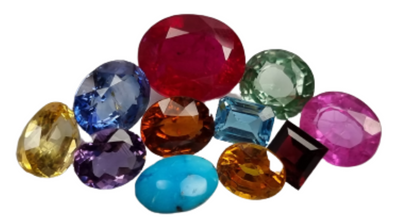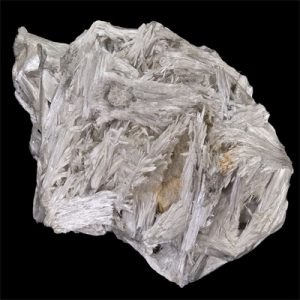Tremolite: Gemstones Information
Tremolite is a mineral belonging to the amphibole group, characterized by its fibrous crystal habit and monoclinic crystal system. It is composed mainly of calcium, magnesium, and silica, with the chemical formula Ca2(Mg5Si8O22)(OH)2. Tremolite occurs in a variety of colors, including white, gray, green, and even translucent varieties.
Occurrence and Distribution:
Tremolite is commonly found in metamorphic rocks, particularly those formed under high-pressure, low-temperature conditions such as marble, schist, and gneiss. It can also occur as a result of hydrothermal alteration in igneous rocks. Tremolite is widespread globally, with significant deposits found in regions such as Italy, Canada, the United States, China, and Australia.
Physical Properties:
Tremolite’s fibrous crystals are often elongated and form bundles or aggregates. It has a hardness ranging from 5 to 6 on the Mohs scale, making it moderately hard. The mineral’s cleavage is typically good in one direction and poor in another, resulting in elongated, prismatic crystals with a silky or fibrous appearance. Tremolite is often translucent to opaque, with a vitreous to silky luster.
Varieties:
Several varieties of tremolite exist, distinguished by color and composition:
White Tremolite: The most common variety, characterized by its white to gray coloration.
Chrome-Tremolite: A green variety of tremolite containing chromium impurities.
Actinolitic Tremolite: Contains higher iron content, resulting in a greenish hue and increased hardness.
Nephrite: Tremolite is one of the minerals that make up the rock known as nephrite, one of the two types of jade (the other being jadeite).
Uses and Applications:
Tremolite’s main use historically has been as a decorative stone. Its fibrous form can be polished to create ornamental objects such as vases, figurines, and jewelry. However, due to its fibrous nature, tremolite is no longer favored for these purposes due to health concerns related to asbestos, a fibrous mineral with similar properties.
In addition to its decorative use, tremolite has industrial applications. It is used in the production of ceramics, including tiles and pottery, as well as in the manufacturing of certain types of insulation materials. However, its use in these applications has declined as safer alternatives have been developed.
Health Concerns:
Tremolite is one of several minerals classified as asbestos, a group of fibrous silicate minerals known for their heat resistance, strength, and insulating properties. Asbestos exposure has been linked to serious health issues, including lung cancer, mesothelioma, and asbestosis. Therefore, precautions must be taken to prevent exposure to tremolite fibers, particularly in occupational settings such as mining and construction.
Conclusion:
Tremolite is a versatile mineral with a complex geological history and a range of industrial and decorative applications. While its use in certain industries has declined due to health concerns related to asbestos, tremolite continues to be appreciated for its natural beauty and unique properties in various contexts. However, caution must be exercised to avoid exposure to its fibrous form and associated health risks.





